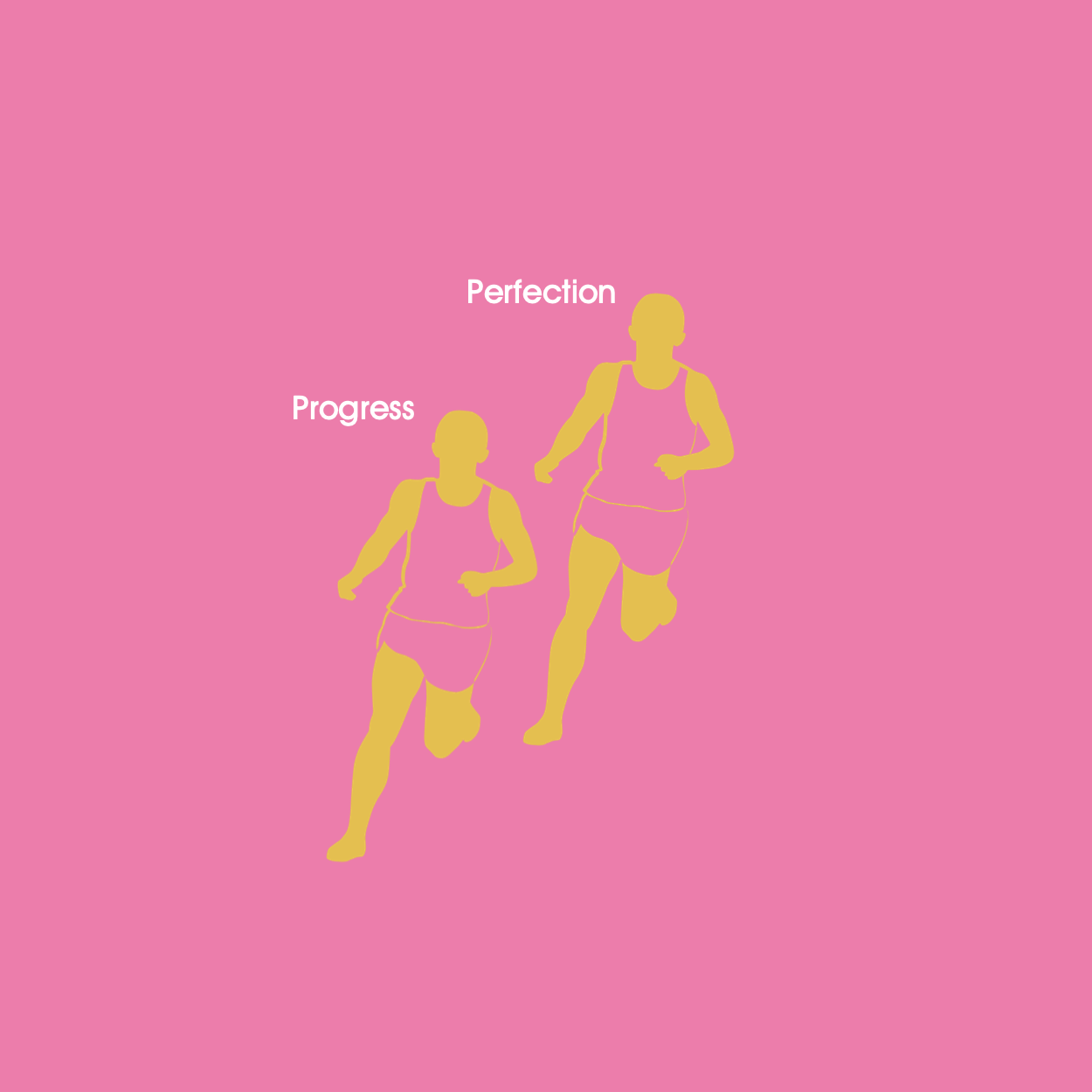Progress vs Perfection
Leadership Blog | 6 minute read

Written by Sara Moore

As is the case with all our personal views, our idea of perfection is entirely subjective.
That garish yellow that the designer thought would be perfect for your break room might be your idea of headache-inducing. What you think is the perfect strategy to implement might be the rest of your team’s worst nightmare, creating a rift within the team and causing a project to grind to a halt.
The trouble is, while striving for perfection can sometimes achieve it, other (perhaps more important) objectives can become collateral damage as a result. So how can we stop an individual’s idea of perfection from getting in the way of collective progress?
Don’t let perfect be the enemy of good
What we believe to be perfect is usually just our individual perspective and can often be focused on minor details that pander to our preferred way of working. So, what’s important to us might not necessarily be what’s going to make an impactful difference in a wider context.
It can be difficult to loosen our grip on what is important to us. After all, it is important! But if missing the bigger picture, we are building stumbling blocks for ourselves and for our organisation.
Projects can often hit the brakes if there are dysfunctional relationships at play. These dysfunctions often stem from a misalignment of values; what is perfect by my values is not perfect by someone else’s. This creates a culture of “us vs them” and the notion that everyone else needs to come around to our way of thinking.
But from an organisational or team perspective, letting go of our interpretations of perfection might be what makes the biggest impact; sometimes not doing a “perfect” job is what’s best.
For instance, a procurement department’s role is to streamline operational costs. In one person’s view, the perfect way of achieving this is minimising expenditure on procuring certain inventory. Getting it at the cheapest rate makes perfect sense in their mind - minimum expense, maximum procurement. It could not be any more important.
But if we take a step back and look at the broader picture, it might benefit the organisation in the long run to procure a more expensive, higher-quality inventory that will bring down operational costs long-term.
It can be difficult to take a step back from our own idea of perfection and do what we don’t believe to be a “perfect” job. But it’s vital to take an overall view and let go of what we deem to be personally important. This isn’t a route to producing the minimum viable product, this a route to tuning in to what is really going to make a difference in the grand scheme of things.
Agreement vs alignment
Perfectionism often deals in ultimatums, such as, “my way or yours” and doesn’t allow for much flexibility. Trying to come to an agreement using this line of thinking is very much an exercise in one person trying to convince the other they are right and vice versa.
In this instance, a conclusion is reached by dominating, attacking the other person’s idea, and taking a “me vs you” approach. In other words, one person is saying, “I have a perfect idea and I’m going to beat you over the head with it until you concede and agree.”
So why don’t we compromise and reach a consensus? The expression that a camel is a horse designed by a committee springs to mind. Everyone wants one of their ideas included in the final project so they can lay claim to having been a part of it.
This method of appeasing everyone’s idea of perfectionism only leads to a scrap heap of different ideas, and while it may seem democratic to include everyone’s contributions, it’s still just a pile of perfectly polished metal, not a working car.
An alternative to agreement is alignment. With alignment there is no attempt to find common ground, only to find a common commitment that everyone can stand behind. Differences are resolved not by making a melting pot of people’s ideas but by taking stock of what will forward the common commitment.
Example process for reaching alignment
One facilitator chairs a discussion between two persons at a time – any more and we’re back to a committee - in conversation to resolve misalignment.
It works like this: One person begins with a proposal and if anyone in the team isn’t aligned with the idea, they have a one-to-one conversation with the proposer, where both parties air their views surrounding the proposal. Any other members of the team who are also misaligned with the proposal observe this conversation until it is their turn for a one-to-one discussion.
This process of circular conversation continues until either everyone is explicitly and completely aligned with the idea, or until the proposer withdraws the idea.
This method of healthy discussion promotes a respect for differences and does away with everyone trying to implement their version of perfect. Once we grasp that our idea of perfect is in itself not perfect, we can focus on the things that are important to drive our organisation forward beyond what we thought capable.
Looking to push the boundaries of what’s possible? Get in touch to explore how we can help you ignite your ambitions.
Published 13/05/2021
Subscribe by Email
Achieve more breakthroughs. Get expert leadership ideas, insights and advice straight to your inbox every Saturday, as well as the occasional bit of news on us, such as offers and invitations to participate in things like events, webinars and surveys. Read. Lead. Breakthrough.
Tags
- Attracting talent
- Behaviour change
- Blended Learning
- Breakthrough Thinking
- Business partnering
- Career planning
- Change management
- Collaboration
- Communication
- Competitive strategy
- Creativity
- Decision making
- Developing middle management
- Developing millennials
- Developing talent
- Employee engagement
- Entrepreneurship
- High performing teams
- Hiring
- Human Resource Management
- Innovation
- Leadership development
- Learning technology
- Managing people
- Managing uncertainty
- Managing yourself
- Mergers & Acquisitions
- Mindset
- Motivating people
- Negotiation
- Organisational culture
- Organisational development
- Organisational values & purpose
- Performance management
- Productivity
- Programme Management
- Retaining talent
- Strategic thinking
- Strategy
- Strategy execution
- Succession planning
- Team development
- Work-life balance
Related posts
Leadership Blog
Leadership burnout: Expanding bandwidth to thrive through complexity
Achieve Breakthrough | 16/12/2025
Leadership Blog
What triggers you as a leader, and how to work with it?
Achieve Breakthrough | 09/12/2025
Leadership Blog
Why it’s impossible to lead with one foot still in your old role
Achieve Breakthrough | 03/12/2025
Leadership Blog
Why a leader’s true value lies in what they enable, not just what they know
Achieve Breakthrough | 25/11/2025
